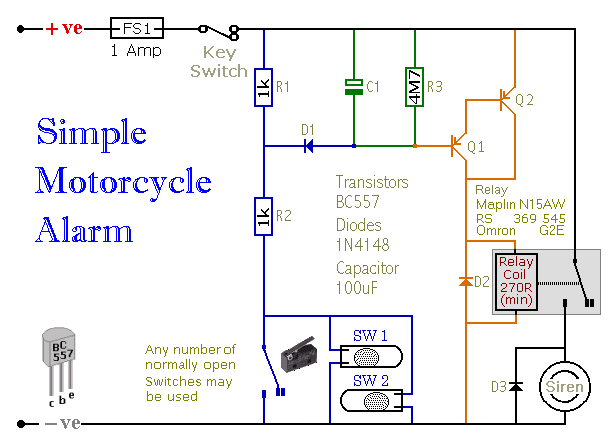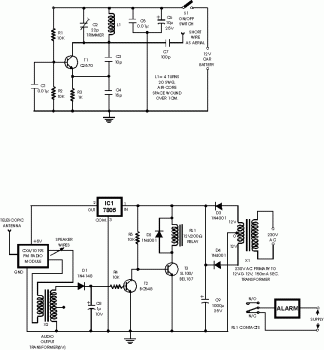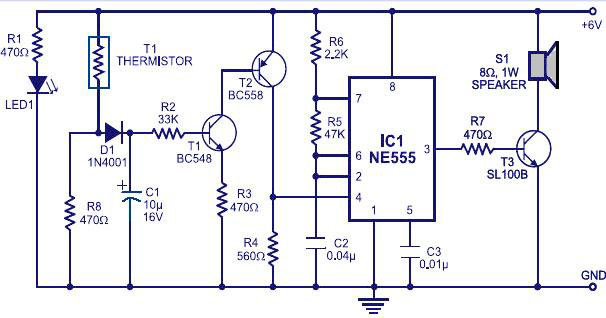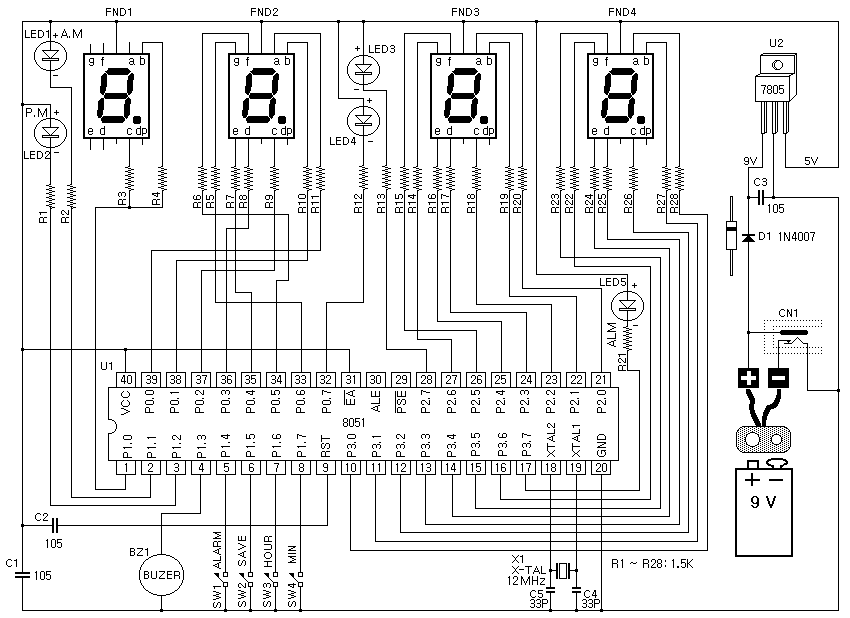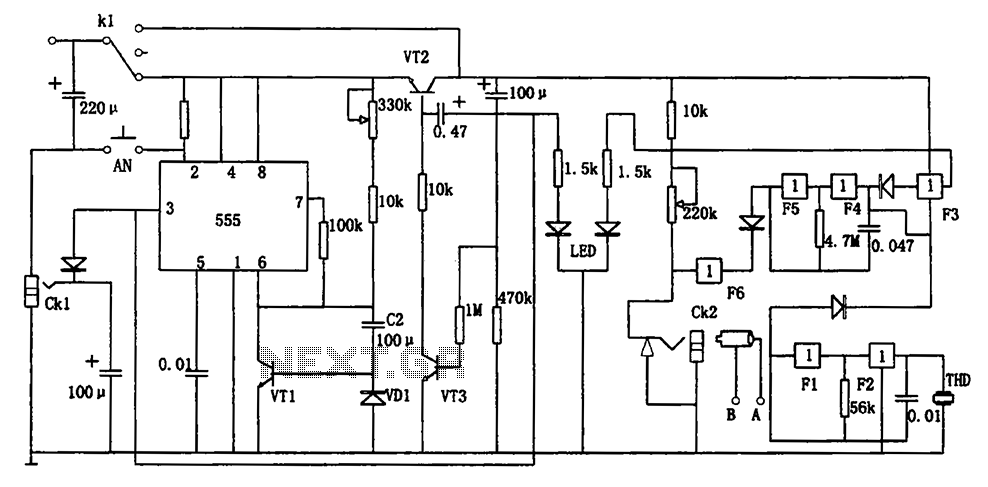
Sun - Up Alarm with 4011
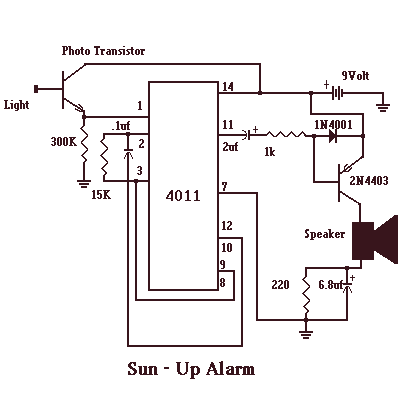
The Sun - Up Alarm can be used to provide an audible alarm for when the sun comes up or it can be used in a dark area and detect when a light comes on. It can also be used to detect a light beam, headlights, etc. The circuit works as follows. The phototransistor is very sensitive to light. (Any phototransistor will work fine) The sun shining on this device will provide a high to one of the NAND gates. This will cause another NAND gate to oscillate which will drive another gate to output a 100Hz tone. The transistor provides drive for the speaker.
The Sun - Up Alarm circuit leverages a phototransistor as the primary light-sensing component. When exposed to light, such as sunlight or artificial light sources, the phototransistor conducts current, producing a high signal. This high signal is fed into the first NAND gate, which is configured to output a low signal unless both of its inputs are high.
In this design, the output of the first NAND gate is connected to a second NAND gate. The second NAND gate is configured to oscillate, creating a square wave output. This oscillation occurs because the first NAND gate's output transitions from low to high when light is detected, causing the second NAND gate to toggle its output state. The frequency of oscillation can be adjusted by incorporating resistors and capacitors in the feedback loop of the second NAND gate, typically resulting in a 100Hz output frequency.
The output from the second NAND gate is then used to drive a transistor, which acts as a switch to control the speaker. The transistor amplifies the oscillating signal from the NAND gate, allowing it to drive the speaker and produce an audible tone. The speaker emits sound at the specified frequency, alerting users to the presence of light or the onset of dawn.
This circuit can be utilized in various applications, including alarm systems for waking up at sunrise or alerting individuals in dark environments when light is detected. The simplicity and versatility of the design make it suitable for both educational purposes and practical implementations in everyday electronic devices.The Sun - Up Alarm can be used to provide a audible alarm for when the sun comes up or it can be used in a dark area and detect when a light comes on. It can also be used to detect a light beam, headlights etc. The circuit works as follows. The phototransistor is very sensitive to light. (Any phototransistor will work fine) The sun shining on this device will provide a high to one of the NAND gates.
This will cause another NAND gate to oscillate which will drive another gate to output a 100hz tone. The transistor provides drive for the speaker. 🔗 External reference
The Sun - Up Alarm circuit leverages a phototransistor as the primary light-sensing component. When exposed to light, such as sunlight or artificial light sources, the phototransistor conducts current, producing a high signal. This high signal is fed into the first NAND gate, which is configured to output a low signal unless both of its inputs are high.
In this design, the output of the first NAND gate is connected to a second NAND gate. The second NAND gate is configured to oscillate, creating a square wave output. This oscillation occurs because the first NAND gate's output transitions from low to high when light is detected, causing the second NAND gate to toggle its output state. The frequency of oscillation can be adjusted by incorporating resistors and capacitors in the feedback loop of the second NAND gate, typically resulting in a 100Hz output frequency.
The output from the second NAND gate is then used to drive a transistor, which acts as a switch to control the speaker. The transistor amplifies the oscillating signal from the NAND gate, allowing it to drive the speaker and produce an audible tone. The speaker emits sound at the specified frequency, alerting users to the presence of light or the onset of dawn.
This circuit can be utilized in various applications, including alarm systems for waking up at sunrise or alerting individuals in dark environments when light is detected. The simplicity and versatility of the design make it suitable for both educational purposes and practical implementations in everyday electronic devices.The Sun - Up Alarm can be used to provide a audible alarm for when the sun comes up or it can be used in a dark area and detect when a light comes on. It can also be used to detect a light beam, headlights etc. The circuit works as follows. The phototransistor is very sensitive to light. (Any phototransistor will work fine) The sun shining on this device will provide a high to one of the NAND gates.
This will cause another NAND gate to oscillate which will drive another gate to output a 100hz tone. The transistor provides drive for the speaker. 🔗 External reference
